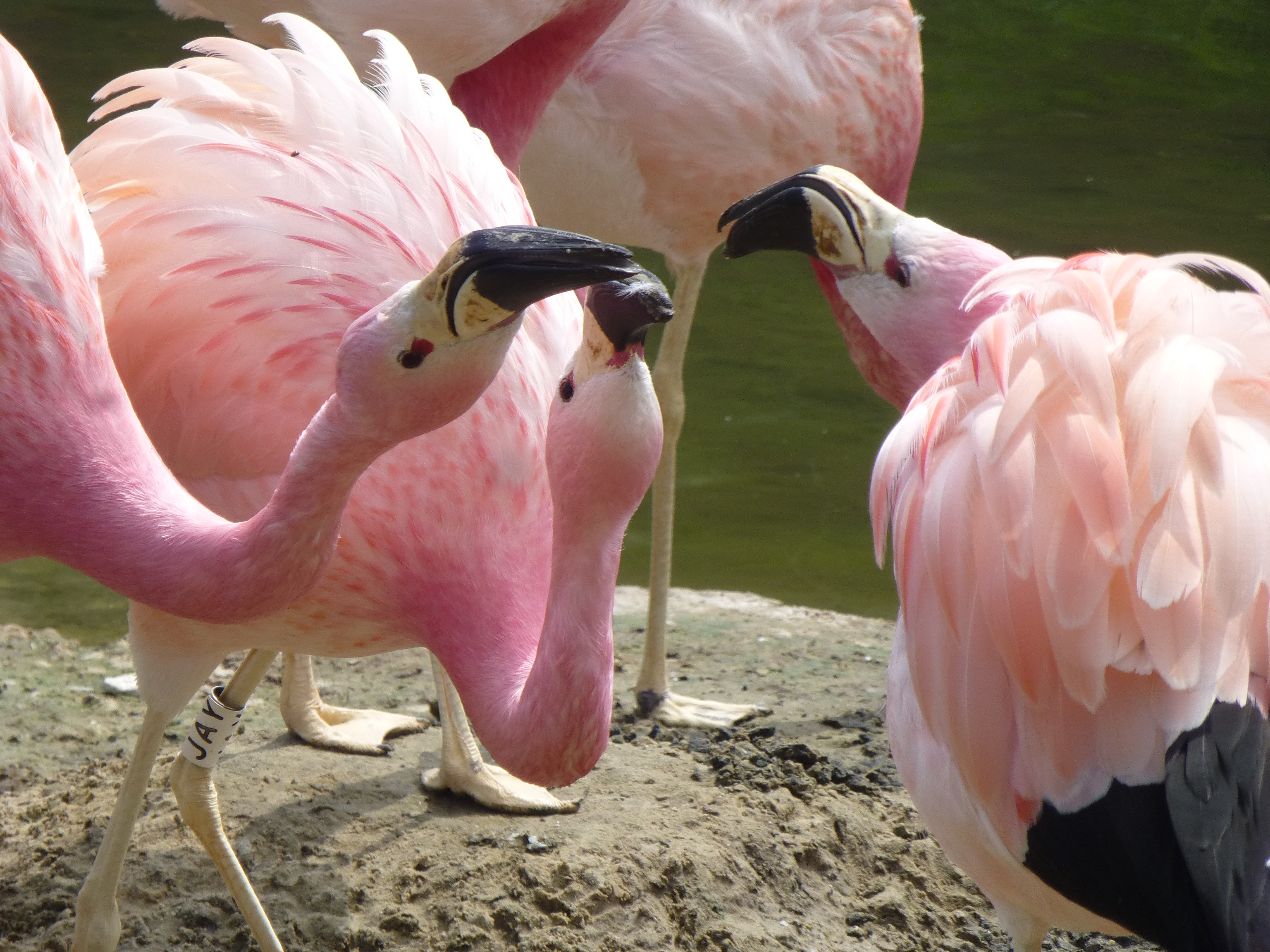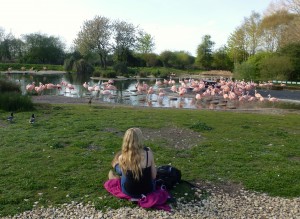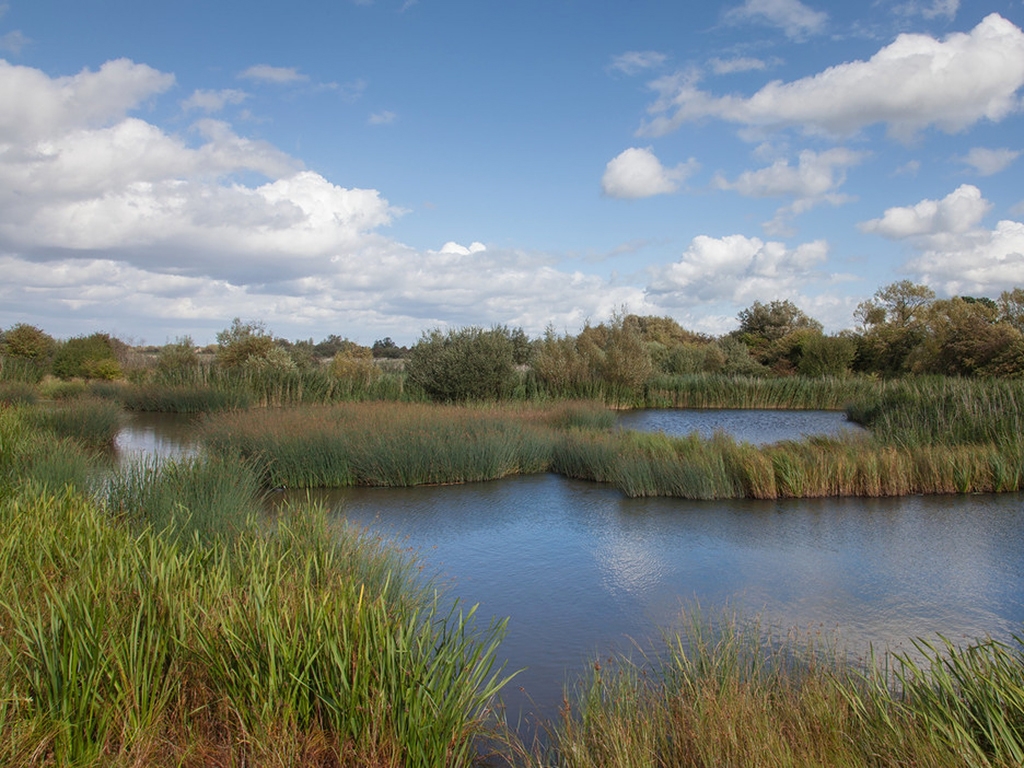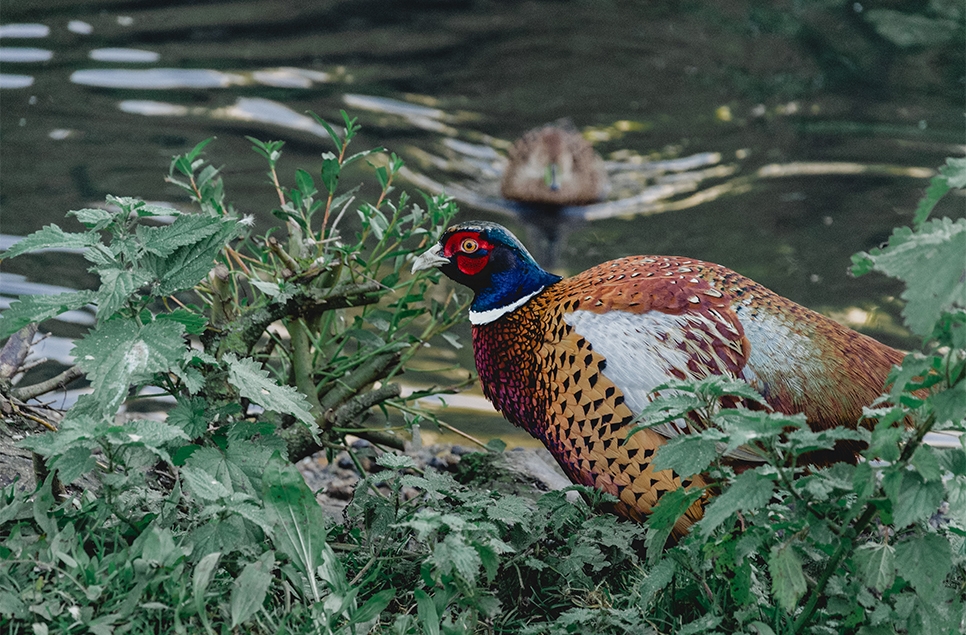Flamingo "school disco" research wins gold for WWT

Research revealing the complex social life of the flamboyant flamingo has won a suitably sparkling gold research award for WWT at its Slimbridge headquarters.
The findings have revealed what lead researcher Paul Rose, a zoo biologist from the University of Exeter, calls a “school disco” culture of popularity contests, cliques, showing off, intimidation, romance, clashing personalities and a few same-sex relationships. The result is a web of different types of “friend” relationships, similar to human social media.
The project – which is ongoing – was judged to be Britain and Ireland’s best captive animal research project by the British & Irish Association of Zoos and Aquariums (BIAZA), earning its Gold Award for Research 2016.
Lead researcher Paul Rose, a PhD student with the University of Exeter’s Centre for Ecology and Conservation, said:
“The results are amazingly similar to a school disco. Some gregarious birds form the linking point that brings groups of similar friends together. Some groups won’t talk to other groups. And some birds with long term partners don’t need as many friends because they already have all the companionship they need. It’s a wonderful, complex maze of relationships.”
“In the past, wild flocks have given us more questions than answers, for example why does the whole flock start building nests at the same time one year, but decide not to another year?
“The flocks at Slimbridge are invaluable because the space and number of birds is large enough to reflect natural wild behaviours, but the captive setting means we are able to identify individual birds and watch them for long periods to see how their behaviour and relationships evolve”.

There were more than 600 flamingos at Slimbridge before the start of this breeding season, including the world’s biggest captive greater flamingo flock – in terms of area and numbers – which is nearly 300 individuals strong. Those numbers are currently increasing by the dozen due to another successful year of breeding at Slimbridge, which suggests the breeding flocks are content.
Visitors can see the chicks for themselves, either around the volcano shaped mounds which the flamingos build as nests, or in crèches as they get a little bigger.
The research has helped WWT to continually improve their flamingo lagoons so that less dominant birds can spread out naturally to find places to forage for longer, away from dominant birds who might try to exclude them from food.
Slimbridge is the only place in the world where you can see all six sub-species of flamingo. This includes “Mr James” who is the only James’s flamingo in the UK. Mr James lives with the closely related Andean flamingos, as James’s flamingos do in the wild. He is more than 60 years old, having already been an adult when he arrived at Slimbridge in 1961.
WWT chairs the global Flamingo Specialist Group which co-ordinates and promotes flamingo conservation and research under the auspices of the IUCN Species Survival Commission and Wetlands International. You can also see flamingos at WWT’s wetland centres at Martin Mere, Washington and Llanelli.
The flamingo social network analysis project has benefitted from more than a dozen students helping to collect data. It is one of more than 700 research and training projects carried out in BIAZA member collections every year, and BIAZA members also support more than 800 field conservation projects per year.
Catch up with Paul’s regular Flamingo Diary .


